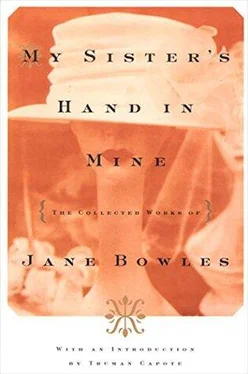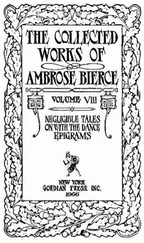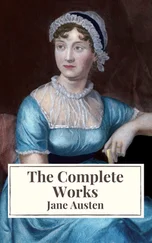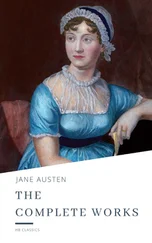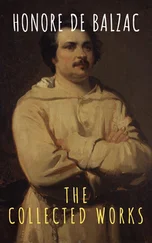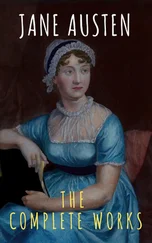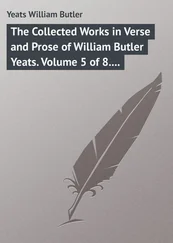Jane Bowles - My Sister's Hand in Mine - The Collected Works of Jane Bowles
Здесь есть возможность читать онлайн «Jane Bowles - My Sister's Hand in Mine - The Collected Works of Jane Bowles» весь текст электронной книги совершенно бесплатно (целиком полную версию без сокращений). В некоторых случаях можно слушать аудио, скачать через торрент в формате fb2 и присутствует краткое содержание. Год выпуска: 2014, Издательство: Farrar, Straus and Giroux, Жанр: Современная проза, на английском языке. Описание произведения, (предисловие) а так же отзывы посетителей доступны на портале библиотеки ЛибКат.
- Название:My Sister's Hand in Mine: The Collected Works of Jane Bowles
- Автор:
- Издательство:Farrar, Straus and Giroux
- Жанр:
- Год:2014
- ISBN:нет данных
- Рейтинг книги:4 / 5. Голосов: 1
-
Избранное:Добавить в избранное
- Отзывы:
-
Ваша оценка:
- 80
- 1
- 2
- 3
- 4
- 5
My Sister's Hand in Mine: The Collected Works of Jane Bowles: краткое содержание, описание и аннотация
Предлагаем к чтению аннотацию, описание, краткое содержание или предисловие (зависит от того, что написал сам автор книги «My Sister's Hand in Mine: The Collected Works of Jane Bowles»). Если вы не нашли необходимую информацию о книге — напишите в комментариях, мы постараемся отыскать её.
My Sister's Hand in Mine: The Collected Works of Jane Bowles — читать онлайн бесплатно полную книгу (весь текст) целиком
Ниже представлен текст книги, разбитый по страницам. Система сохранения места последней прочитанной страницы, позволяет с удобством читать онлайн бесплатно книгу «My Sister's Hand in Mine: The Collected Works of Jane Bowles», без необходимости каждый раз заново искать на чём Вы остановились. Поставьте закладку, и сможете в любой момент перейти на страницу, на которой закончили чтение.
Интервал:
Закладка:
In Two Serious Ladies, Mrs. Copperfield is often cheered by recalling a dream she has “had more than once.”
She was being chased up a short hill by a dog. At the top of the hill there stood a few pine trees and a mannequin about eight feet high. She … discovered her to be fashioned out of flesh, but without life … Mrs. Copperfield wrapped one of the mannequin’s arms tightly around her own waist. She was startled by the thickness of her arm and very pleased. The mannequin’s other arm she bent upward from the elbow with her free hand. Then the manniquin began to sway backwards and forwards. Mrs. Copperfield clung all the more tightly to the mannequin and together they fell off the top of the hill and continued rolling for quite a distance until they landed on a little walk, where they remained locked in each other’s arms. Mrs. Copperfield loved this part of the dream best; and the fact that all the way down the hill the mannequin acted as a buffer between herself and the broken bottles and little stones over which they fell gave her particular satisfaction.
After the stroke and the seizures and the years of depression, she wrote, “I can’t think the way I could.” Not did, could. She had, once, the power; the power of the imagination, that peculiar thing so much like life but not of life, an imposing mannequin, unnerving to others, which the artist embraces. Jane Bowles was an original, a mistress of the elliptical, an angel of the odd, who fashioned her uncompleted souls to seek redemption along avenues blessed by neither God nor Kafka.
In A Little Original Sin, a friend of Jane’s, Marguerite McBey, described her hands: “She had marvelously strange hands. They weren’t terribly feminine. They looked like hands that did something but they were so soft, as though there weren’t bones in them, as if when you touched them, they didn’t resist you.”
So too is her best work. Marvelously strange. It does not resist the reader’s attention. In so many continually surprising ways, the work is, in fact, irresistible.
JOY WILLIAMS is the author of four novels — the most recent, The Quick and the Dead, was a finalist for the Pulitzer Prize in 2001—and three collections of short stories, as well as Ill Nature, a book of essays that was a finalist for the National Book Critics Circle award for criticism.
Introduction
It must be seven or eight years since I last saw that modern legend named Jane Bowles; nor have I heard from her, at least not directly. Yet I am sure she is unchanged; indeed, I am told by recent travelers to North Africa who have seen or sat with her in some dim casbah café that this is true, and that Jane, with her dahlia-head of cropped curly hair, her tilted nose and mischief-shiny, just a trifle mad eyes, her very original voice (a husky soprano), her boyish clothes and schoolgirl’s figure and slightly limping walk, is more or less the same as when I first knew her more than twenty years ago: even then she had seemed the eternal urchin, appealing as the most appealing of non-adults, yet with some substance cooler than blood invading her veins, and with a wit, an eccentric wisdom no child, not the strangest wunderkind, ever possessed.
When I first met Mrs. Bowles (1944? 1945?) she was already, within certain worlds, a celebrated figure: though only in her twenties, she had published a most individual and much remarked novel, Two Serious Ladies; she had married the gifted composer and writer Paul Bowles and was, together with her husband, a tenant in a glamorous boardinghouse established on Brooklyn Heights by the late George Davis. Among the Bowles’ fellow boarders were Richard and Ellen Wright, W. H. Auden, Benjamin Britten, Oliver Smith, Carson McCullers, Gypsy Rose Lee, and (I seem to remember) a trainer of chimpanzees who lived there with one of his star performers. Anyway, it was one hell of a household. But even amid such a forceful assembly, Mrs. Bowles, by virtue of her talent and the strange visions it enclosed, and because of her personality’s startling blend of playful-puppy candor and feline sophistication, remained an imposing, stage-front presence.
Jane Bowles is an authoritative linguist; she speaks, with the greatest precision, French and Spanish and Arabic — perhaps this is why the dialogue of her stories sounds, or sounds to me, as though it has been translated into English from some delightful combination of other tongues. Moreover, these languages are self-learned, the product of Mrs. Bowles’ nomadic nature: from New York she wandered on to and all over Europe, traveled away from there and the impending war to Central America and Mexico, then alighted awhile in the historic ménage on Brooklyn Heights. Since 1947 she has been almost continuously resident abroad; in Paris or Ceylon, but largely in Tangiers — in fact, both Jane and Paul Bowles may now safely be described as permanent Tangerinos, so total has their adherence become to that steep, shadowy-white seaport. Tangiers is composed of two mismatching parts, one of them a dull modern area stuffed with office buildings and tall gloomy dwellings, and the other a casbah descending through a medieval puzzlement of alleys and alcoves and kef-odored, mint-scented piazzas down to the crawling with sailors, shiphorn-hollering port. The Bowles have established themselves in both sectors — have a sterilized, tout confort apartment in the newer quarter, and also a refuge hidden away in the darker Arab neighborhood: a native house that must be one of the city’s tiniest habitations — ceilings so low that one has almost literally to move on hands and knees from room to room; but the rooms themselves are like a charming series of postcard-sized Vuillards — Moorish cushions spilling over Moorish-patterned carpets, all cozy as a raspberry tart and illuminated by intricate lanterns and windows that allow the light of sea skies and views that encompass minarets and ships and the blue-washed rooftops of native tenements receding like a ghostly staircase to the clamorous shoreline. Or that is how I remember it on the occasion of a single visit made at sunset on an evening, oh, fifteen years ago
A line from Edith Sitwell: Jane, Jane, the morning light creaks down again —. This from a poem I’ve always liked, without, as so often with the particular author, altogether understanding it. Unless “morning light” is an image signifying memory (?). My own most satisfying memories of Jane Bowles revolve around a month spent in side-by-side rooms in a pleasantly shabby hotel on the rue du Bac during an icy Paris winter — January, 1951. Many a cold evening was spent in Jane’s snug room (fat with books and papers and foodstuffs and a snappy white Pekingese puppy bought from a Spanish sailor); long evenings spent listening to a phonograph and drinking warm applejack while Jane built sloppy, marvelous stews atop an electric burner: she is a good cook, yessir, and kind of a glutton, as one might suspect from her stories, which abound in accounts of eating and its artifacts. Cooking is but one of her extracurricular gifts; she is also a spookily accurate mimic and can re-create with nostalgic admiration the voices of certain singers — Helen Morgan, for example, and her close friend Libby Holman. Years afterward I wrote a story called Among the Paths to Eden, in which, without realizing it, I attributed to the heroine several of Jane Bowles’ characteristics: the stiff-legged limp, her spectacles, her brilliant and poignant abilities as a mimic (“She waited, as though listening for music to cue her; then, ‘Don’t ever leave me, now that you’re here! Here is where you belong. Everything seems so right when you’re near, When you’re away it’s all wrong.’ And Mr. Belli was shocked, for what he was hearing was exactly Helen Morgan’s voice, and the voice, with its vulnerable sweetness, refinement, its tender quaver toppling high notes, seemed not to be borrowed, but Mary O’Meaghan’s own, a natural expression of some secluded identity”). I did not have Mrs. Bowles in mind when I invented Mary O’Meaghan — a character she in no essential way resembles; but it is a measure of the potent impression Jane has always made on me that some fragment of her should emerge in this manner.
Читать дальшеИнтервал:
Закладка:
Похожие книги на «My Sister's Hand in Mine: The Collected Works of Jane Bowles»
Представляем Вашему вниманию похожие книги на «My Sister's Hand in Mine: The Collected Works of Jane Bowles» списком для выбора. Мы отобрали схожую по названию и смыслу литературу в надежде предоставить читателям больше вариантов отыскать новые, интересные, ещё непрочитанные произведения.
Обсуждение, отзывы о книге «My Sister's Hand in Mine: The Collected Works of Jane Bowles» и просто собственные мнения читателей. Оставьте ваши комментарии, напишите, что Вы думаете о произведении, его смысле или главных героях. Укажите что конкретно понравилось, а что нет, и почему Вы так считаете.
